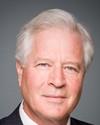For MOSAIC, there are three best practices. One is a consortium that we formed with S.U.C.C.E.S.S. and ISS of B.C., in Vancouver, Burnaby, and New Westminster. We formed a consortium to provide all the settlement services in the three cities. That consortium can help in terms of standardized wages, in terms of training staff, in terms of service delivery and planning, and also in terms of data collection and reporting to our provincial government. So it's working really well, and we talk and work together and we share together. I think that's one of the best practices I've seen. Agencies forget about competition but really work together to address equally immigrants and refugees in Vancouver, Burnaby, and New Westminster.
The second one I would say is our ability to relate policy, research, and programming. We worked with the School of Social Work at the University of B.C. to pilot a project with refugee youth. They are at risk because they are not in school, nor are they at work. So we work with researchers, and we hire a youth outreach team. We work with them where they are and group them together to provide life skills, soft skills, and English-language training to help them to integrate or reintegrate into society.
The third one is not a program in particular, but it is the organizational structure that we see as being important as a best practice. We are working on accreditation, looking at our governance, looking at our management structure, and also looking at policy development. It's really creating a strong and competent organization in order to provide service. I think that is also important.
In addition, we have good connections across Canada with many organizations with which we share best practices. That is important as well.



